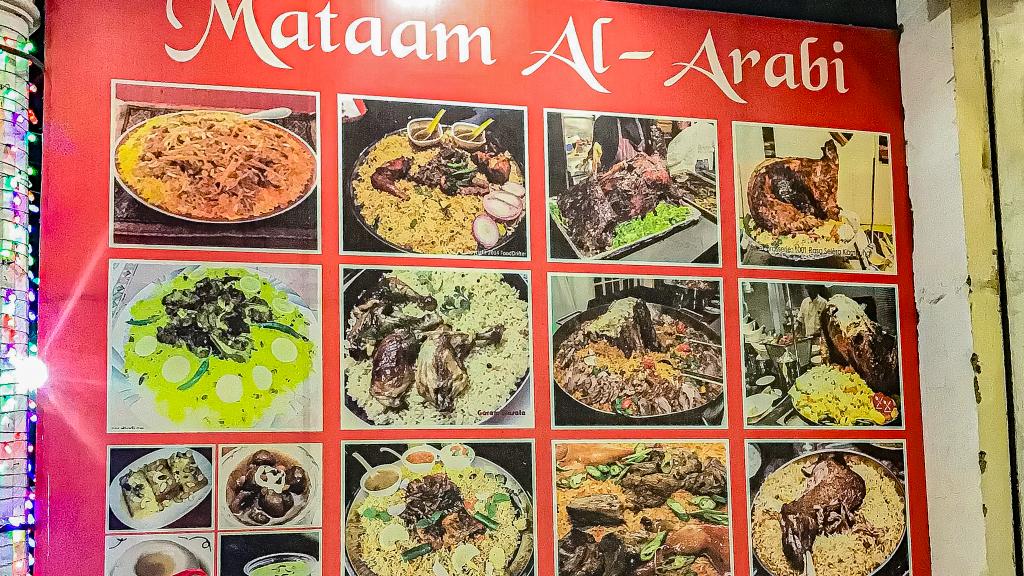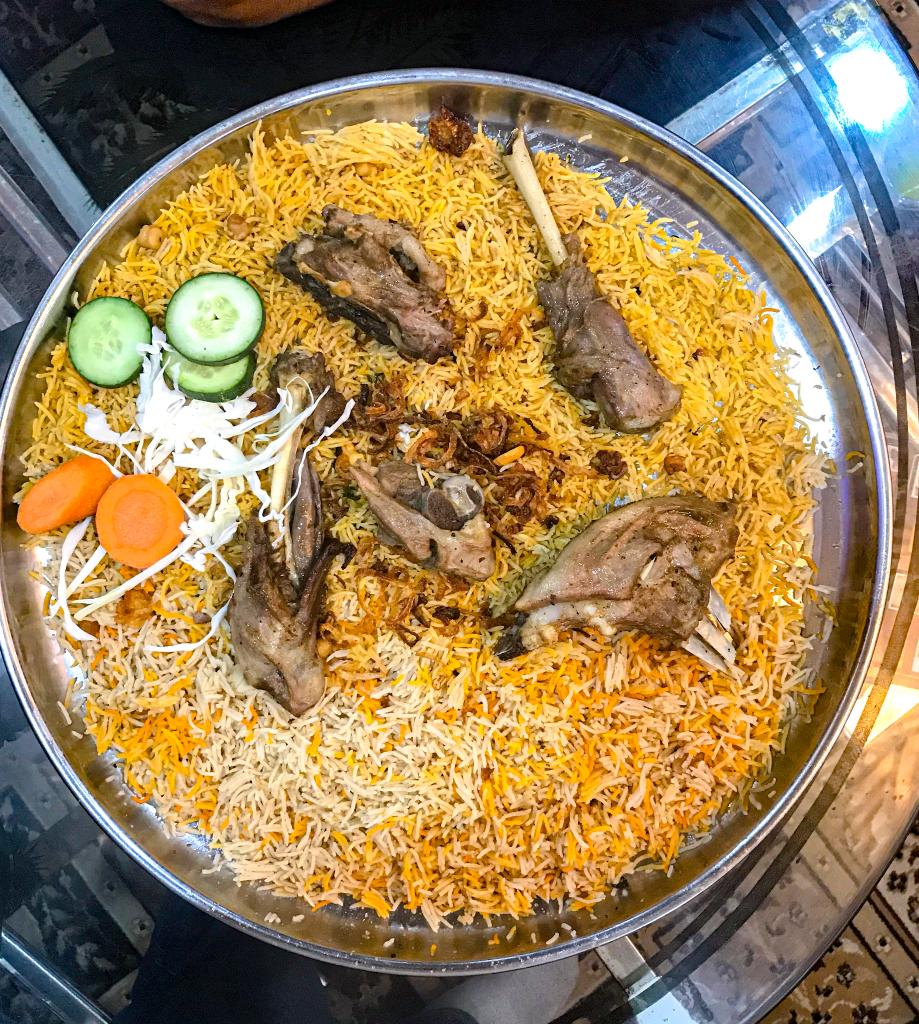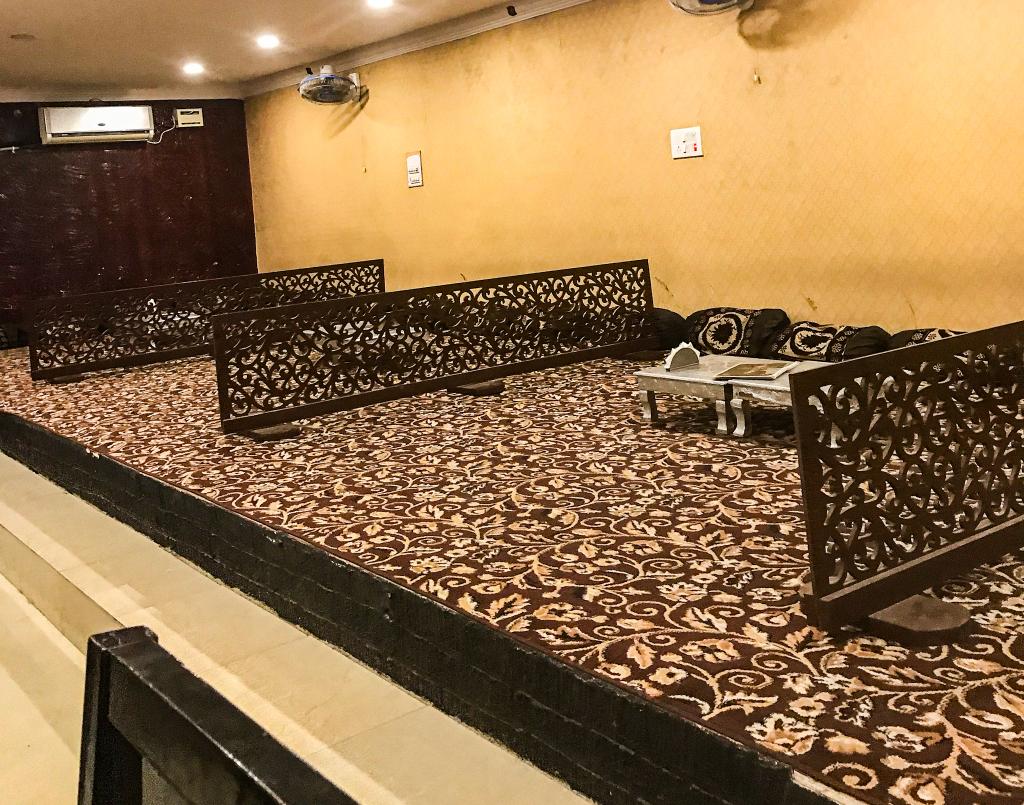
I discovered Mandi in Barkas by accident. Many years ago, I was exploring Old City Hyderabad and discovered an area called Barkas, around 4 kilometres from Old City. Barkas is a largely Hadhrami arab dominated suburb of Hyderabad. The arabs here trace their ancestry to Hadhramaut region in today’s Yemen. The Hadhrami Arabs have been in India for many generations as traders and warriors and were part of the Peshwa Maratha army and probably part of the Sultan of Gaujarat’s army before that. After the Marathas lost to the British in the Third Anglo-Maratha war, the Nizam of Hyderabad requested the British to transfer these troops to his army.
The Hadhrami arabs were given the title ‘Chaush’ or palace officers in the Nizam’s army and were tasked with guarding the Nizam’s palace. It is said that Barkas is a corrupted word for Barracks, as this area was where the barracks of the chaush were situated. Barkas is different from Old City, both food wise and culturally. It’s still considered fashionable here for men to wear lungis (with geometric patterns) which’s a typical Hadhrami arab tradition. For many years, there was no biryani available in Barkas or the adjoining Chandrayaangutta. One would only get Hyderabadi versions of Mandi, Majboos and Kabsa, all three arabic rice preparations. Mandi is now a famous dish across Hyderabad, but it’s origins are in Barkas.

Mataam al arabi is one of earlier restaurants which started serving mandi in Barkas. Started in 2005. It shifted to its current bigger location in 2015. Mataam al Arabi and most mandi restaurants in Hyderabad have big halls with carpeted flooring. The food is served in a traditional big thal (metal serving plate), kept on small stools with everyone sitting around. There are no tables or chairs and every sits on the carpeted floor.
Mandi is a typical Yemeni / Arab dish of rice and meat cooked in an underground pit. The rice is cooked with water and a special blend of spices in a vessel, kept above charcoal or logs of fire. This is covered with a steel mesh and pre-marinated meat (chicken / goat) is put on top. The pit is then covered with a lid and mud is put on top to seal the pit. The rice and meat cooks slowly over 3 hours in the residual heat. Unlike biryani where the meat is cooked in liquid. In Mandi, the meat is dry cooked and get’s a lovely crisp texture on the outside and remains soft and falling off the bone inside and the drippings from the meat enrich the flavour of the rice.

Mataam-al-arabi also serves two typical sweets. Aseed and Kaddu ka kheer. Aseed or Aseeda is a Yemeni dessert (which’s also made as a savoury dish in Yemen) made from pounded wheat, jaggery, ghee and condensed milk. The wheat is first cooked in warm water with ghee. Then jaggery and khoya (condensed milk solid) are added. Kaddu ka kheer, on the other hand is a typical Hyderabadi sweet. In Hyderabad, bottle gourd is known as kaddu and not pumpki and is grated and cooked in milk and sugar. A unique Hyderabadi sweet that’s tasty but not too heavy and a perfect accompaniment to Mandi in Barkas.
Click here for my other posts on Hyderabad.
Categories:
Tags:

The Irani Cafe Chair – Defining What Is An Irani Cafe

Mumbai’s Infamous Eggless Omelette

The 20 Types of Indian Vegetarians